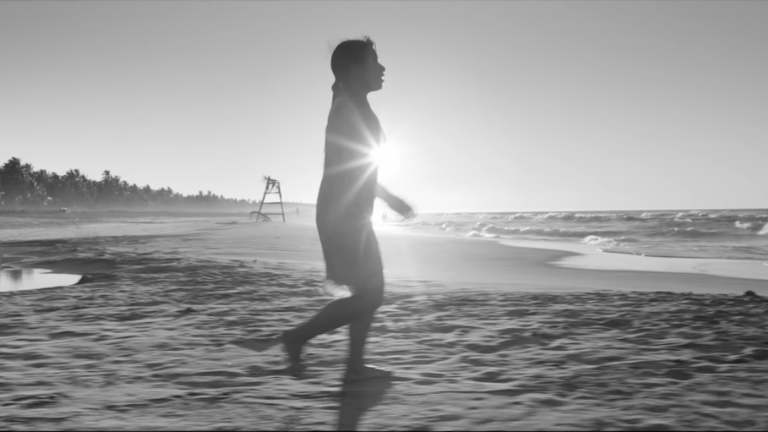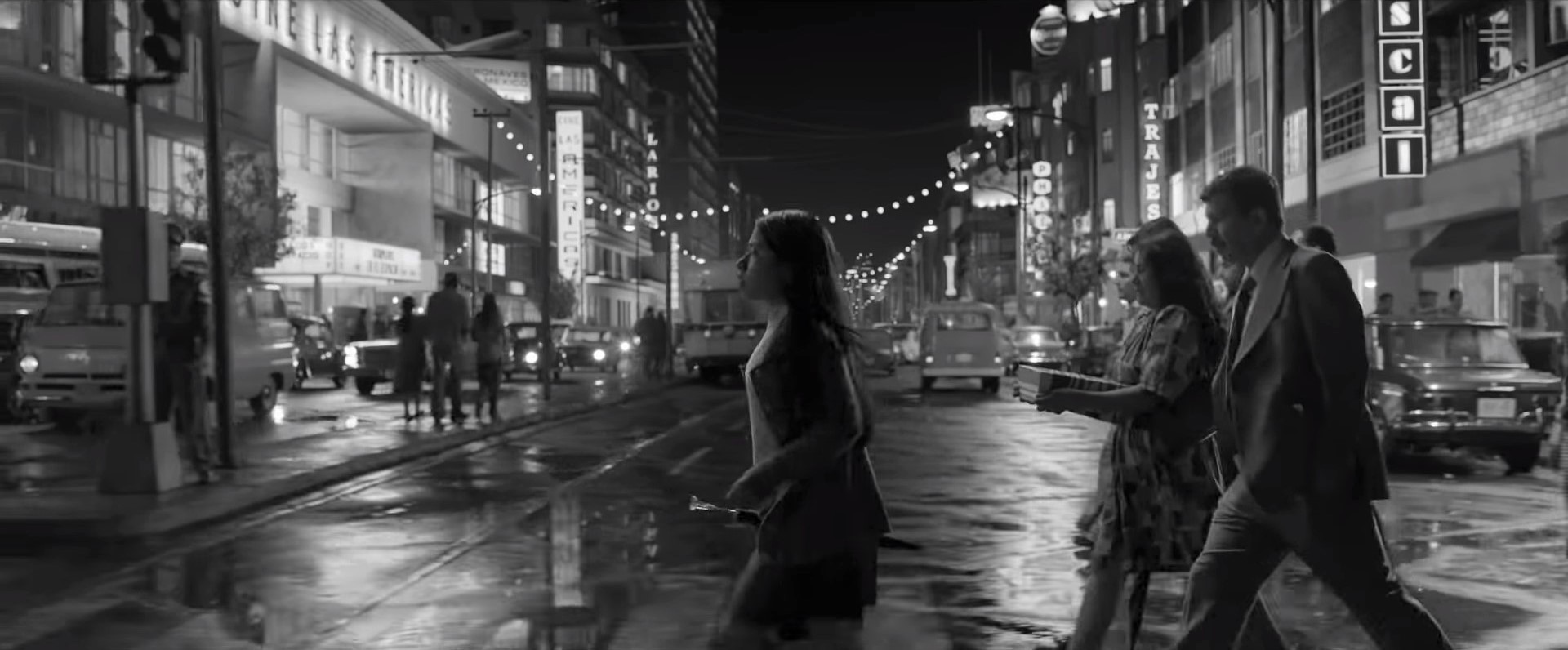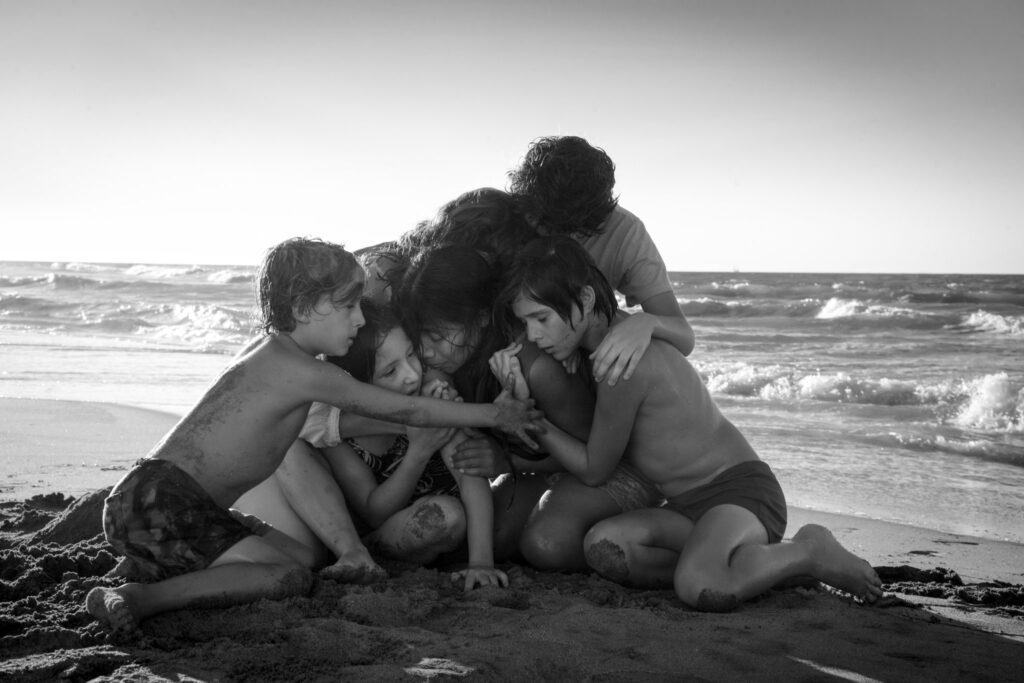Alfonso Cuarón pays a heart-warming tribute to his childhood nanny Libo Rodriguez through his intensely personal masterly woven black and white film Roma. It is set at the backdrop of Colonia Roma in Mexico City in 1970-1971 and portrays a part of Cuarón’s childhood. Roma is built on the shared memories of both Cuarón and Libo.
Cleo (Yalitza Aparicio), a Mexican indigenous rural woman, works as a domestic help in an upper-middle-class family at Colonia Roma in Mexico City. She emerges beyond a mere servant and becomes an integral part of the family which is about to be disintegrated due to the sudden divorce of Sofia (Marina de Tavira) from Antonio (Fernando Grediaga).

In the meantime, Cleo gets impregnated by Fermin (Jorge Antonio), who denies all the responsibility and abandons her. Amidst severe turbulence, Cleo is taken to a hospital by Sofia’s mother Teresa (Verónica García) but delivers a stillborn baby. Cleo breaks down. The family visits the beaches at Tuxpan where two children are saved by Cleo from drowning, even though Cleo herself does not know swimming. Sofia and her children acknowledge Cleo’s love and contribution to the family. Cleo breaks down and reveals that she did not want her baby.

Cuarón is also the cinematographer of the film and each shot in Roma depicts his personal story and visual imagery which can only be mastered by a person who has the utmost command of his craft. He filmed Roma with mostly wide shots and very long takes. The patient camera observes the characters and space from behind and waits until the story unfolds. Despite numerous problems in society like social class divisions, he shows the ways for dreams as well. Cuarón’s very personal Roma starts with an airplane appearing as a reflection on the wet floor and ends with another airplane flying and vanishing across the horizon leaving behind Colonia Roma. In the bitter world of agonies and sufferings, there is room for dreams too. Humans are too small and insignificant with respect to time and the universe. Multiple times in the film, Cuarón’s camera moves upward and takes the viewers from the earth to space, from reality to dreamscape.
All the actors in the film deliver mesmerizing performances despite having no prior acting experiences. Yalitza was chosen amongst hundreds of applicants and performs her role extremely sensitively. Marina de Tavira delivers a powerful performance as Sofia, who has just been abandoned by her husband Antonio. Another brilliant aspect of the film is sound. Sync Sounds of streets, sea, shops, etc are perfectly captured throughout the film. There is a scene where Sofia’s mom Teresa takes Cleo to a furniture shop and a massive student protest breaks out on the street beside the shop. The sound of the upheaval is captured brilliantly from the shop.

Roma is dedicated to Cuarón’s childhood nanny Libo Rodriguez and Cleo is the pivotal character of the film. Cuarón wholeheartedly acknowledges Libo’s contributions to his life through this film. So, even though different economic and social layers of Mexican society are vivid throughout the film, Roma is more about love, affection, and family bonding.
Cinema can not be devoid of the surrounding where the characters dwell in. Quite obviously, the incidents that stirred Mexico in 1970-71 are covered in the film. Cuarón shows government brutality and paramilitary torture through Corpus Christi Massacre, land conflicts, and houses demolitions. Roma also pinpoints women’s helplessness and vulnerability when both Sofia and Cleo get dumped by their respective partners.
Even though the story of Roma is set in 1970-71, Cuarón did not want to give it a vintage look. It was shot on a 65 mm digital format camera and looks contemporary in spite of being black and white as if the story flows through recent times. Cuarón wants to provide the viewers with real-time experience of his cherished and precious childhood memories. Roma is an example of the manifestation of a filmmaker’s artistic genius.
The only person who had the full script before the shooting is Cuarón himself. The actors did not have the script beforehand and had to feel the scene and act during the shooting itself. That’s the reason Roma always looks and feels so original throughout the runtime.

Roma is all about expressions of human emotions. The way we cry, laugh, feel abandoned, or sympathize is portrayed with supreme care, affection, and love. Above all, it is a saga of ordinary human beings. Two central figures in the film get abandoned by their male partners. Cleo gives birth to a stillborn baby. Student protesters are gunned down by the government-appointed paramilitary forces. The houses of ordinary citizens are demolished. It can easily be inferred that the creation of Roma is a triumphant moment of cinema.
